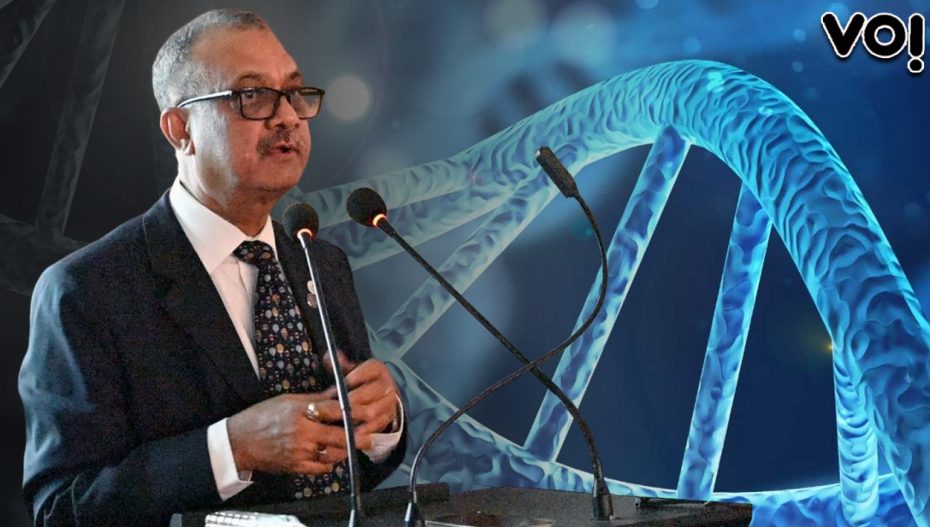In his first-ever lecture to law students on the key role scientific evidence plays in solving crime and getting airtight convictions, former director-general of police Keshav Kumar had his class take an oath – the law students of Ahmedabad’s Motilal Nehru Law College vowed to study the importance of DNA and forensics along with their degree.
The former top Gujarat cop who has been the lead investigator on several national headline-making cases like the Adarsh land scam in Mumbai had once also helmed Gujarat’s anti-corruption bureau of Gujarat.
Vibes of India caught Kumar enthralling a rapt crowd with stories from his hay days. Kumar spoke about cracking the high-profile Bijal Joshi rape case where the accused were convicted and given long jail terms because of the strong forensic evidence he and his team had gathered.
Sprinkling several interesting anecdotes into his lecture to keep his audience spellbound, Kumar spoke about how DNA was initially used only for paternity tests and identification purposes, and how the first DNA evidence was admitted to an Indian court as evidence was in 1991 under Section 45 IEA. DNA and forensics can help in prevention, detection and conviction, Kumar told the attendees.
Quoting statistics, Kumar said that the conviction ratio in major crimes is around 37% in India. To deal with such a crime conviction rate remains a rounded challenge for our forces.
“It’s possible to improve these statistics only with the right use of DNA and forensics in investigations”, he emphasised.
After a 35-year illustrious run in the service, Kumar retired in April 2021. In his LinkedIn bio, he talks about his passion: the application of forensics in crime investigation. He boasts how he has managed to get convictions for 58 accused solely based on forensic application during the investigations by using ‘latest scientific aids and tools’.
Kumar believes that there is ‘huge scope of creativity in the usage of forensic tools and techniques’. “Their use is an art,” he says.
Kumar had also busted the lion poachers’ gang that was active in Gir Sanctuary in Gujarat which led him to stumble upon the domain of Wildlife Crime Investigation. The poaching case was perhaps one of the first such cases when forensic science was used in the investigation of a wildlife case. Twenty people of a family were convicted in that case.
During the lecture, the former top cop listed eight major crime cases that were solved and the accused was convicted because of foolproof DNA evidence.
The cases he mentioned during the lecture were:
1- The Rajeev Gandhi Assassination case: The identification of the victims along with Rajeev Gandhi was possible due to DNA
2- The Naina Sahni murder case: The body of the victim was identified with the help of DNA.
3- The Beant Singh assassination case: In this case, during the investigation the then DGP and investigating officer of the case had first suggested that the assassin could be a human bomb, but he was not taken seriously. Later, DNA fingerprinting of the victim helped identify Babbar Khalsa operative Dilawar Singh
4- The Priyadarshini Mattoo case: The court convicted the accused and sentenced him to death on the basis of DNA evidence which was found on the victim’s undergarments
5- The Bijal Joshi gang-rape case: Both the DNA report and the forensic evidence from the crime scene and the victim were key to the case
6- The Shiney Ahuja rape case: Bollywood actor Shiney Ahuja was convicted as DNA samples from the victim’s private parts matched his
7- The Nirbhaya case: All the accused were convicted and sentenced to death based on the DNA evidence and the dying declaration of the victim
8- The Mumbai Shakti Mill gang rape case: The accused were nailed with the help of the DNA found on the belongings of the deceased
The students of Motilal Nehru Law College showed keen interest in the lecture and said that they found the lecture very intriguing. Principle Chaudhary said that the idea of organising this lecture came to him after attending a similar seminar by Kumar where he was talking to a room full of cops. Chaudhary said he thought his college students will benefit from it as investigation and forensics form a big part of studying and practising law.
We also got a chance to interact with Kumar after his lecture. See the whole video below:












